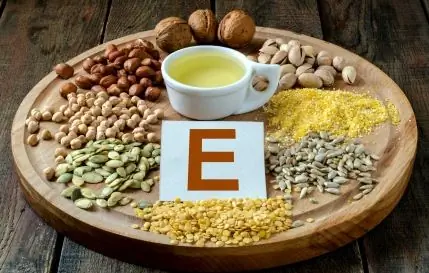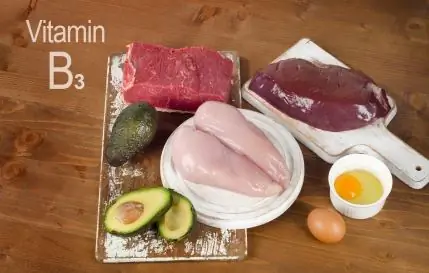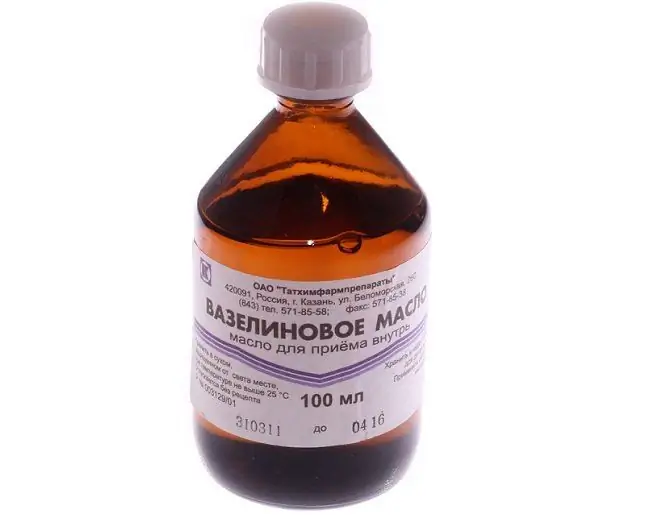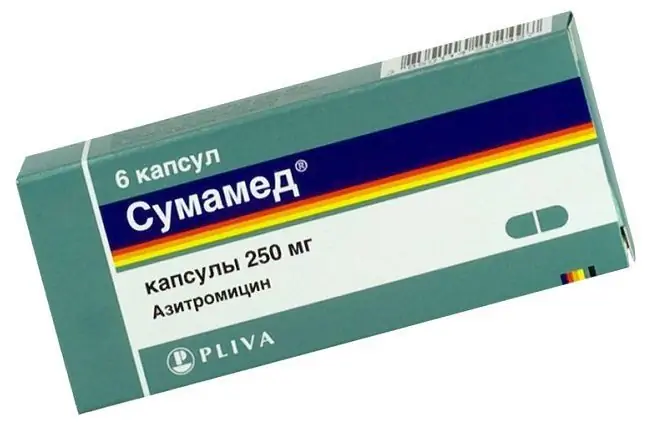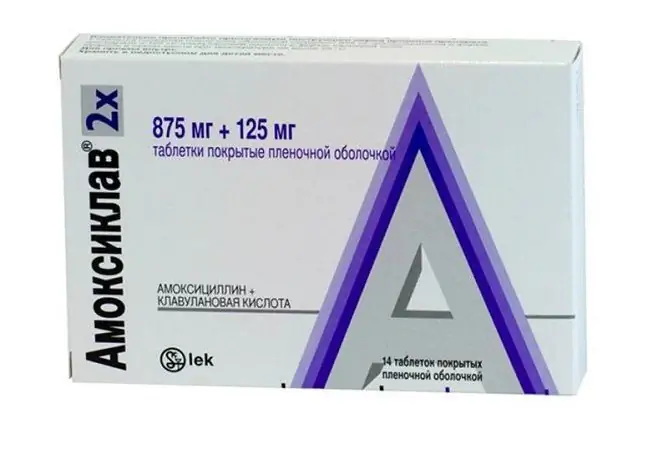- Author Rachel Wainwright [email protected].
- Public 2023-12-15 07:39.
- Last modified 2025-11-02 20:14.
Panadol
Panadol: instructions for use and reviews
- 1. Release form and composition
- 2. Pharmacological properties
- 3. Indications for use
- 4. Contraindications
- 5. Method of application and dosage
- 6. Side effects
- 7. Overdose
- 8. Special instructions
- 9. Application during pregnancy and lactation
- 10. Use in childhood
- 11. In case of impaired renal function
- 12. For violations of liver function
- 13. Use in the elderly
- 14. Drug interactions
- 15. Analogs
- 16. Terms and conditions of storage
- 17. Terms of dispensing from pharmacies
- 18. Reviews
- 19. Price in pharmacies
Latin name: Panadol
ATX code: N02BE01
Active ingredient: paracetamol (paracetamol)
Manufacturer: GlaxoSmithKline Dungarvan (Ireland), Famar SA (Greece)
Description and photo updated: 2019-27-08
Prices in pharmacies: from 36 rubles.
Buy

Panadol is a drug that has analgesic and antipyretic effects.
Release form and composition
Dosage forms of Panadol release:
- Dispersible tablets (soluble): flat, around the circumference - with a beveled edge, white; on one side - risk; on both sides of the tablet, the surface may be somewhat rough (in laminated strips of 2 or 4 pcs., 6 or 12 strips in a cardboard box);
- Film-coated tablets: capsule-shaped with a flat edge, white; on one side - embossed "PANADOL", on the other - risk (in blisters of 6 or 12 pcs., 1 or 2 blisters in a cardboard box).
Each pack also contains instructions for the use of Panadol.
Composition of 1 dispersible tablet:
- Active ingredient: paracetamol - 0.5 g;
- Additional components: citric acid, sodium bicarbonate, sodium saccharinate, sorbitol, sodium carbonate, povidone, sodium lauryl sulfate, dimethicone.
Composition of 1 film-coated tablet:
- Active ingredient: paracetamol - 0.5 g;
- Additional components: talc, hypromellose, pregelatinized and corn starch, triacetin, povidone, potassium sorbate, stearic acid.
Pharmacological properties
Pharmacodynamics
Panadol is an antipyretic analgesic. It has antipyretic and analgesic effects. By acting on the centers of thermoregulation and pain, it blocks COX-1 and COX-2 (cyclooxygenase-1 and -2), mainly in the central nervous system.
Virtually no anti-inflammatory properties. Does not lead to irritation of the gastric / intestinal mucosa. It does not affect the synthesis of prostaglandins in peripheral tissues, and therefore does not affect water-salt metabolism.
Pharmacokinetics
Paracetamol has high absorption, C max (maximum concentration of the substance) is 0.005-0.02 mg / ml, the time to reach it is 30-120 minutes.
Binds to plasma proteins at a level of 15%. The substance crosses the blood-brain barrier. Up to 1% of the dose of paracetamol taken by a nursing mother is found in breast milk. The therapeutically effective plasma concentration of the substance is achieved when it is used in a dose of 10-15 mg / kg.
Metabolism occurs in the liver (from 90 to 95%): 80% of the dose enters into conjugation reactions with glucuronic acid and sulfates, followed by the formation of inactive metabolites; 17% of the dose undergoes hydroxylation, resulting in the formation of 8 active metabolites, which are subsequently conjugated with glutathione to form already inactive metabolites. In the case of a lack of glutathione, these metabolites can lead to blockade of the enzyme systems of hepatocytes and their necrosis.
Also, the isoenzyme CYP 2E1 is involved in the metabolism of the drug.
T 1/2 (half-life) is 1-4 hours. Excretion is carried out by the kidneys in the form of metabolites, mainly conjugates; only 3% of the dose is excreted unchanged.
In elderly patients, the clearance of the drug decreases, while there is an increase in T 1/2.
Indications for use
Panadol tablets are prescribed for the symptomatic treatment of the following conditions / diseases:
- Febrile syndrome, including fever with colds and flu (as an antipyretic);
- Pain syndrome including migraine, painful periods, muscle pain, toothache, headache, lower back pain and throat pain (as a pain reliever).
The drug is intended to reduce the severity of pain at the time of application, it has no effect on the progression of the disease.
Contraindications
Absolute:
- Age up to 6 years;
- Hypersensitivity to drug components.
Relative (Panadol's appointment requires caution in the presence of the following conditions / diseases):
- Viral hepatitis;
- Benign hyperbilirubinemia (including Gilbert's syndrome);
- Deficiency of glucose-6-phosphate dehydrogenase;
- Hepatic and renal failure;
- Alcoholic liver damage and alcoholism;
- The period of pregnancy and breastfeeding;
- Elderly age.
Panadol, instructions for use: method and dosage
Panadol should be taken orally. Dispersible tablets must be dissolved in water before taking (volume - not less than 100 ml); film-coated tablets are washed down with water.
Recommended dosages of Panadol (the interval between doses of a single dose should not be less than 4 hours):
- Adults (including elderly patients): up to 4 times a day, 0.5-1 g; maximum per day - 4 g;
- Children 9-12 years old: up to 4 times a day, 0.5 g; maximum per day - 2 g;
- Children 6-9 years old: 3-4 times a day, 0.25 g; maximum per day - 1 g.
The duration of the course of taking Panadol without medical supervision for anesthesia should not exceed 5 days, as an antipyretic agent - 3 days. Any changes to the recommended dosage regimen should be discussed with your doctor.
Side effects
As a rule, if the recommended dosage regimen is observed, Panadol is well tolerated.
Possible side effects:
- Allergic reactions: sometimes - skin rashes, itching, angioedema;
- Hematopoietic system: rarely - anemia, thrombocytopenia, increased amount of methemoglobin in the blood (methemoglobinemia);
- Urinary system: with long-term use of high doses - renal colic, papillary necrosis, nonspecific bacteriuria, interstitial nephritis.
Overdose
The drug should be taken only in the doses recommended in the instructions. If the dosage of Panadol is exceeded, even if there is no deterioration in well-being, it is necessary to immediately seek medical help, since there is a high likelihood of serious delayed liver damage.
In adults, liver damage can be observed with a dose of 10 g of paracetamol. The use of the drug in a dose of 5 g or more can cause liver damage in patients with additional risk factors, which include:
- long-term therapy with the following drugs: carbamazepine, phenobarbital, phenytoin, primidone, rifampicin, St. John's wort preparations or other drugs that stimulate liver enzymes;
- the probable presence of glutathione deficiency (noted against the background of malnutrition, cystic fibrosis, HIV infection, starvation, exhaustion);
- regular alcohol abuse.
Acute poisoning is manifested by symptoms such as stomach pain, vomiting, nausea, pallor of the skin, sweating. 1-2 days after an overdose, signs of liver damage are determined (in the form of pain in the liver, increased activity of liver enzymes). In severe cases, liver failure is observed, there may be acute renal failure with tubular necrosis (possibly in the absence of severe liver damage), encephalopathy, pancreatitis, arrhythmia and coma. The development of a hepatotoxic effect in adults is manifested when taking paracetamol in a dose exceeding 10 g.
Therapy: Cancellation of Panadol. You should immediately seek medical help. Shows gastric lavage and the use of enterosorbents (polyphepan, activated carbon). Donators of SH-groups and precursors of glutathione synthesis are introduced: 8-9 hours after overdose - methionine, after 12 hours - N-acetylcysteine.
Depending on the concentration of the substance in the blood, as well as on the time that has passed after taking the drug, the need for additional therapeutic measures is determined (continued administration of methionine, intravenous administration of N-acetylcysteine).
In case of serious violations of hepatic function, 24 hours after taking paracetamol, therapy should be carried out in conjunction with specialists from a specialized department of liver diseases or a toxicological center.
special instructions
When prescribing a long course in high doses, the blood picture should be monitored.
Only under medical supervision and with caution Panadol is prescribed for kidney or liver diseases, simultaneously with antiemetic drugs (metoclopramide, domperidone), as well as drugs that lower blood cholesterol levels (cholestyramine).
To avoid toxic liver damage, you should not combine the use of Panadol and alcoholic beverages.
In cases where there is a need for daily intake of pain relievers, paracetamol, when combined with anticoagulants, can only be taken occasionally.
The doctor must be warned about taking Panadol in cases of an analysis to determine the level of glucose and uric acid in the blood.
Application during pregnancy and lactation
Panadol is prescribed with caution during pregnancy / lactation.
Pediatric use
Panadol therapy is contraindicated in patients under 6 years of age.
With impaired renal function
In case of renal failure, therapy should be carried out under medical supervision.
For violations of liver function
With hepatic failure, therapy should be carried out under medical supervision.
Use in the elderly
For elderly patients, Panadol tablets are prescribed with caution.
Drug interactions
The simultaneous long-term use of paracetamol with some drugs can lead to the development of the following actions:
- Indirect anticoagulants (warfarin and other coumarins): the likelihood of bleeding increases;
- Salicylates: Increases the risk of bladder or kidney cancer;
- Other non-steroidal anti-inflammatory drugs: the risk of worsening renal failure (end-stage onset), renal papillary necrosis and "analgesic" nephropathy increases.
With the combined use of Panadol with certain substances / preparations, the following effects may be observed:
- Ethanol: the likelihood of developing acute pancreatitis increases;
- Metoclopramide, domperidone: the rate of absorption of paracetamol increases;
- Diflunisal: the likelihood of developing hepatotoxicity and the plasma concentration of the active substance Panadol increases;
- Inducers of microsomal oxidation enzymes in the liver (ethanol, phenytoin, flumecinol, barbiturates, carbamazepine, tricyclic antidepressants, rifampicin, zidovudine, phenytoin, phenylbutazone): overdose increases the likelihood of hepatotoxic action;
- Myelotoxic drugs: the manifestations of Panadol's hematotoxicity increase;
- Uricosuric drugs: their activity decreases;
- Inhibitors of microsomal oxidation (cimetidine): the risk of hepatotoxic action decreases;
- Cholestyramine: the rate of absorption of paracetamol decreases.
Analogs
Panadol's analogues are: Paracetamol, Paracetamol MS, Panadol Active, Strimol, Efferalgan, Prohodol, Perfalgan, Tsefekon D.
Terms and conditions of storage
Keep out of reach of children at temperatures up to 25 ° C.
Shelf life:
- Dispersible tablets - 4 years;
- Film-coated tablets - 5 years.
Terms of dispensing from pharmacies
Available without a prescription.
Reviews about Panadol
Most of the reviews about Panadola are positive. Patients describe it as an inexpensive remedy that effectively relieves pain and lowers body temperature. The development of adverse reactions is rarely reported. There are reviews that with severe pain, the drug has an insufficient analgesic effect.
Price for Panadol in pharmacies
The approximate price for Panadol is (12 pcs in a package):
- coated tablets - 33-51 rubles;
- soluble tablets - 53-55 rubles.
Panadol: prices in online pharmacies
|
Drug name Price Pharmacy |
|
Panadol 500 mg film-coated tablets 12 pcs. RUB 36 Buy |
|
Panadol 500 mg soluble tablets 12 pcs. 42 RUB Buy |
|
Children's Panadol 250 mg rectal suppositories 10 pcs. RUB 54 Buy |
|
Children's Panadol 125 mg rectal suppositories for children 10 pcs. RUB 58 Buy |
|
Children's Panadol 120 mg / 5 ml oral suspension 100 ml 1 pc. 84 rbl. Buy |
|
Panadol Baby Panadol Baby antipyretic and pain reliever, suspension (with syringe), 100 ml RUB 95 Buy |

Maria Kulkes Medical journalist About the author
Education: First Moscow State Medical University named after I. M. Sechenov, specialty "General Medicine".
Information about the drug is generalized, provided for informational purposes only and does not replace the official instructions. Self-medication is hazardous to health!


